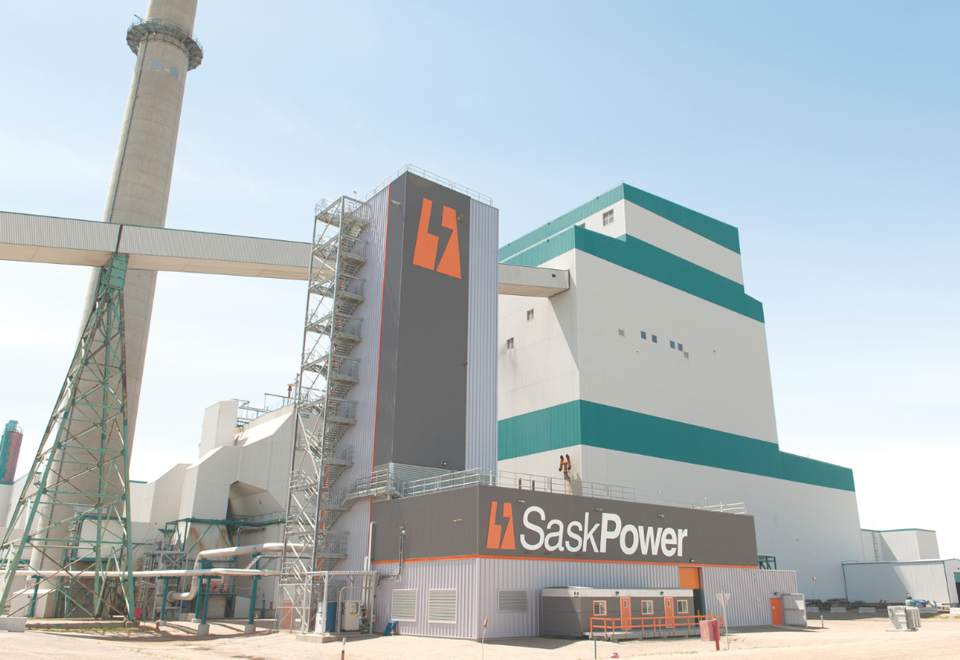Hold on here, CSS is not dead just yet.
That was the thrust of press release issued by the International Carbon Capture and Storage (CCS) Knowledge Centre in response to SaskPower’s announcement it would not be retrofitting Units 4 and 5 of the Boundary Dam Power Station with CCS.
A lot of that comes down to the economies of scale, and in particular, how well suited the Shand Power Station is for future carbon capture as opposed to retrofitting those older units.
Corwyn Bruce, head of technical services with the International CCS Knowledge Centre, spoke to the Mercury on July 9. The organization is a non-profit, non-partisan operation with about a dozen people seconded from SaskPower and funded by BHP.
Bruce pointed out, “We are doing a study on a CCS retrofit of Shand.”
It’s something they’re calling “second generation CCS.”
If built, it would be twice the size of the capture plant at Boundary Dam Unit 3 (BD3), with a nameplate capacity of 2 million tonnes of carbon dioxide per year. That would be the size of a capture unit for BD4 and BD5 combined.
The high-level study started last year.
As with any second-generation technology, cost reductions are expected. Cost reductions for a next facility were originally anticipated to be 30 per less; however, this study's preliminary findings indicate the potential for significantly deeper cost reductions.
Bruce noted that they’ve found the turbines of Shand, BD6 and Polar River 1 and 2 are all amiable for CO2 capture, with large quantities of low-pressure steam needed for amine rejection.
One of the most expensive items in the retrofit of BD3 was the one-of-a-kind turbine needed. Similar turbines would be required for BD4 and BD4. Bruce also explained that of the cost overruns on the BD3 project, the lion’s share were related to the power plant portion, as opposed to the capture plant.
To use a farming analogy, if carbon capture were a mower behind a tractor, Shand already has a PTO connection, while BD4 and BD5 would require a separate motor on the mower.
The centre noted there are also several important environmental benefits of the new design beyond CO2 abatement. The design takes advantage of the CCS plant's ability to vary the plant output, and to increase the capture rate at lower loads beyond 90 per cent, such that it supports the integration of additional renewable energy from wind and solar.
The new design also requires no additional cooling water��and eliminates all sulfur dioxide emissions.
As the Shand Power Station was originally designed for two coal-burning units, but only one was ultimately built, there is ample room to locate a carbon capture facility immediately adjacent to the plant. It would go north of the power plant, and west of the Carbon Capture Test Facility (CCTF).
Having the CCTF in place also means that piloting of whatever process will be used can be done right there, on the actual facility.
The CCTF was built initially with the cooperation of Hitachi (which built the turbine for BD3). They were the first company to use the test facility. However, they were purchased by Mitsubishi Heavy Industries, which has its own, separate carbon capture process, which Bruce said SaskPower is considering. Currently Shell CanSolv, which provided the capture process in the BD3 capture plant, is using the CCTF, having started last fall and concluding this December.
Timelines
The International CCS Knowledge Centre expects to complete its feasibility study on Shand later this year. Asked how long it would take to get to CO2 flowing down a pipeline, Bruce responded that it would be a minimum of five years, and possibly much longer.
That includes one year to finish a front-end engineering and design study, then once a final investment decision is made, a further four years to design, build and commission a CCS plant before CO2 is flowing down the pipe. He added that it could take longer than 12 months for the FEED study, and while a final investment decision could be made in an afternoon by a private company, a provincial decision would likely take a lot longer.
Market changes could be another factor. If there’s a desire for CO2 for enhanced oil recovery, that could be swing value to CCS. Competition for power is another factor, Bruce noted.
In May, North Dakota Governor Doug Burgum told the Williston Basin Conference that the state could eventually need more CO2 than it can produce, to be used for CCS in the Bakken oilfields.
Internationally, Bruce said Norway is building a carbon capture plant on a cement facility, and considering one for a waste incinerator. In China, most of the interest they have seen had been for retrofits of CCS on existing coal plants, not on new builds. But to that end, the International CCS Knowledge Centre has memoranda of understanding with six firms in China.
“CCS is not a coal-fired power plant solution. It’s a CO2 solution,” he said.
��




